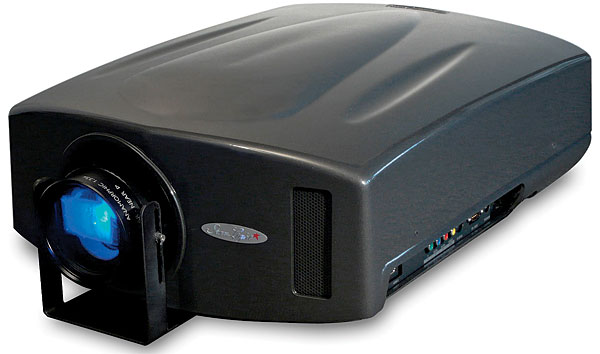How To Shop for a Video Projector Page 2
A first-class home theater projection setup also requires a good screen, which can range in cost from under $1,000 for a fixed, non-retractable model to pricier than the projector itself, depending on its size and features. A good screen is an equal partner with the projector in a home projection setup, and choosing the best screen for your application is not a casual exercise. For more on this, see the feature, “Screen It” on page 30.
Choosing a projector based on an in-store demo is dicier than choosing a flat-panel HDTV in the same environment. In-store projector demos are not only few and far between, they’re often dismal. However, if you’ve never experienced a home theater projector before, a good demo will absolutely knock your socks off.

How can you spot a good demo? First of all, it should be conducted in a light-controlled room. Would you complain if you paid $16 for an IMAX ticket and they left the house lights on throughout the show? The same applies here. With a conventional screen, you’ll want a completely dark environment to get a good handle on the projector’s color quality, contrast, black level, and resolution. Also ask about the size and gain of the demo screen, which hopefully will be similar to what you plan to use, and whether or not the projector has been calibrated. If the salesperson doesn’t know these details, find out or go somewhere else. And call up the picture menu to see where it’s set. If it’s set to Vivid or Dynamic, known to insiders as torch modes, you’re in the wrong store. Ditto if the picture is obviously dim or washed out.
Bring along some of your own discs, and include one or two that feature very dark scenes. Dark scenes are the most difficult for a digital projector to handle. This is the one area where the old CRT technology was arguably superior, although the best of the current digital projectors are now excellent in this regard. Almost any 15-minute clip from Harry Potter and the Half-Blood Prince is an excellent test for this. This film is full of images loaded with blacks and dark grays. If these images look gray or foggy, the projector has a substandard black level and poor shadow detail—or it hasn’t been properly set up.
Also look closely for white-field uniformity, which can be a problem on LCD and LCOS displays (less so today than in the past) but not with DLPs. To check for this, play a black-and-white film and look for patchy, subtle hints of color (such as magenta) on various parts of the screen. Also check a white-on-black crosshatch pattern to see how well the three primary colors overlap to form a consistent white-on-black grid, particularly in the center. Errors here can result from misaligned color panels (on multichip designs) or lens imperfections (called chromatic aberration, and likely to some extent on any projector). Few projectors align the three colors perfectly across the entire screen, but if you can see the problem from a normal viewing distance, or if you can see more than a single pixel-width of error from close up, haul up the red flag. A few projectors provide controls to improve color convergence, but they don’t always offer sufficient resolution to be fully effective.
Be sure to sample some standard-definition material as well. Don’t expect it to look as good as HD, but if you have a lot of DVDs in your collection, you’ll want to know what to expect from less than full HD sources.

If a single-chip DLP projector is on your short list, check it out for the rainbow effect. The rotating, multi-segment color wheel causes this common artifact, which looks just like its name suggests: a fleeting flash of rainbow-like color that doesn’t belong in the scene. It can be obvious on some types of material, such as a dark scene with bright street lamps. On uniformly bright scenes, it’s hardly ever visible. Not all viewers are sensitive to this artifact; in fact, some can’t see it at all. It’s less common in more recent DLP projectors than in earlier designs, but we’ve never seen a single-chip DLP projector with lamp-based illumination that’s completely free of it. The main concern is whether or not it happens often enough to annoy you—or other family members who will be frequent viewers. (LED-illuminated single-chip DLP projectors don’t use a color wheel but instead cycle multicolored LEDs on and off so rapidly that the rainbow effect becomes invisible.)
Also check for noise from the projector’s cooling fan. Most modern projectors have both high and low lamp modes, and the best of them are silent or nearly so in either. The sound in your system should mask any noise most of the time. Still, quieter is better, especially during quiet scenes if you’re sitting close to the projector, as is typical in most installations.
The first 3D home theater projectors have hit the market in the past few months. There are even a few models in the $5,000 or slightly under range, and the sky’s the limit at the top. Because it generally produces a dimmer image, 3D projection puts additional demands on the projector and the screen. Avoid an extremely large projection screen if you want a satisfyingly bright 3D picture.
As with all things video, a thorough review can also point out things you might not spot in a short demonstration. You’ll find reviews of four projectors in this issue, covering the midrange and high-end price ranges. The three least expensive models are also 3D. And be sure to keep an eye out for additional projector reviews, both 2D and 3D, in future issues of Home Theater.
- Log in or register to post comments






















































